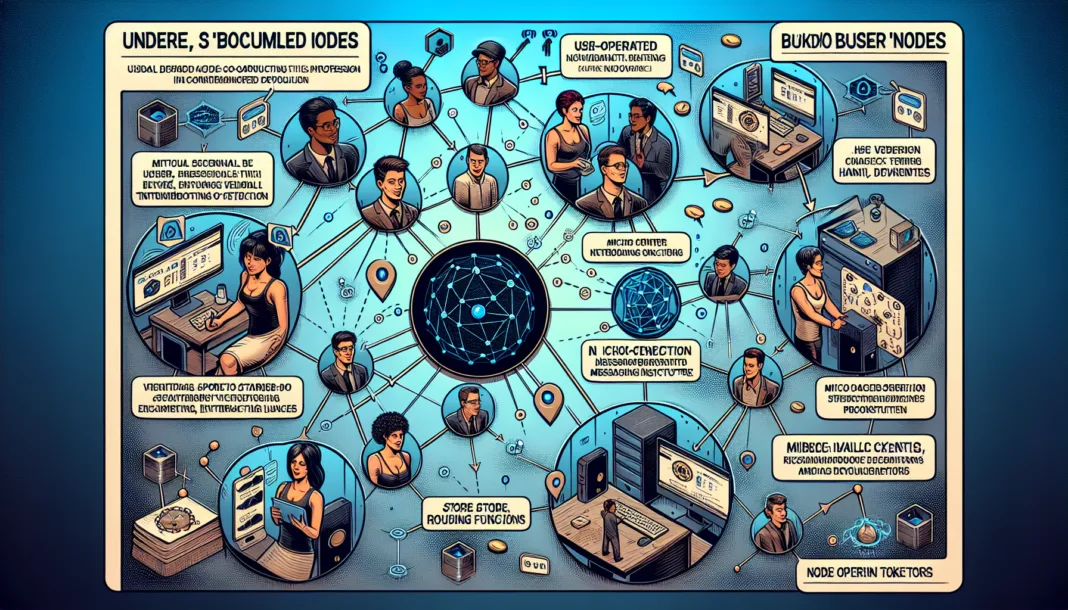KEY TAKEAWAYS
- Dmail Network is pioneering a decentralized communication network where users operate nodes, enhancing data security and earning rewards.
- The DePIN model decentralizes infrastructure, offering censorship resistance and scalability by transforming devices into micro data centers.
- Dmail’s Proof of Communication mechanism incentivizes active participation, aligning economic incentives with network growth.
Web3 technology is evolving beyond speculation, with the Decentralized Physical Infrastructure Network (DePIN) movement emerging as a new frontier. This movement focuses on real users providing bandwidth, storage, and compute power to fuel digital ecosystems. Dmail Network is making significant strides in this area by building a physical communication network where users run the infrastructure, secure data, and earn rewards for their contributions.
Unlike traditional messaging apps that operate purely in software, Dmail’s approach involves users actively participating in the network. Each user’s inbox functions as a node within a dynamic ecosystem. At its core, Dmail is more than just a Web3 mailbox; it serves as an encrypted routing layer connecting identities, wallets, and applications across multiple blockchain networks.
How Dmail’s DePIN Model Operates
Dmail’s DePIN model distributes tasks across a network of user-operated nodes. These nodes handle various functions, including storage, routing, and verification. Encrypted message data is stored redundantly across nodes, while messages are transmitted via peer-to-peer relays, eliminating the need for centralized servers. Nodes also confirm delivery, timestamping, and integrity on-chain, ensuring a secure and reliable communication network.
Node operators are rewarded for their contributions, earning tokens for delivering verified messages, maintaining uptime, encrypting and decrypting traffic, and storing data fragments with redundancy guarantees. This model transforms traditional email hosting from a cost to a revenue-generating activity for users.
Decentralization and Economic Alignment
Dmail’s DePIN model offers several advantages over legacy communication systems, which rely on centralized corporate data centers. By decentralizing infrastructure, Dmail provides censorship resistance, scalability, and user sovereignty. Every device, from desktop nodes to home servers, becomes a micro data center in a global mesh of encrypted messaging infrastructure.
The innovation lies in Dmail’s Proof of Communication mechanism, which rewards active participation rather than idle hardware. This approach ensures that every byte routed, message confirmed, and storage block maintained is measurable, auditable, and rewarded, aligning economic incentives with network growth.
While many DePIN networks focus on compute or storage, Dmail adds communication as a critical component. Messaging is a universal network function that connects every user, app, and protocol. By embedding DePIN logic directly into communication infrastructure, Dmail bridges the physical world of nodes with the social graph of users.
For more information, visit the official announcement here.
Why This Matters: Impact, Industry Trends & Expert Insights
Dmail Network is pioneering a new frontier in decentralized communication by implementing the Decentralized Physical Infrastructure Network (DePIN) model. This approach enables users to contribute to and benefit from a decentralized communication system, transforming traditional email hosting into a revenue-generating activity.
According to a CoinLaunch report, Decentralized Physical Infrastructure Networks (DePIN) are experiencing strong growth and evolving as a transformative blockchain sector. This aligns with Dmail Network’s efforts to leverage user-operated nodes for decentralized communication, highlighting the potential for DePIN to surpass DeFi in significance.
Expert insights from MapMetrics suggest that DePIN is transforming communication networks by decentralizing infrastructure, leveraging blockchain technology. This reinforces Dmail’s model of decentralizing communication infrastructure, offering significant cost savings and empowering local communities.
Explore More News:
Disclaimer: The views expressed in this article are those of the authors and do not necessarily reflect the official policy of CoinsHolder. Content, including that generated with the help of AI, is for informational purposes only and is not intended as legal, financial, or professional advice. Readers should do their research before taking any actions related to the company and carry full responsibility for their decisions.

